#South Australia Wine Regions
Explore tagged Tumblr posts
Text
Wine tasting experience followed by a platter and a glass of wine near McLaren Vale Saturdays and Sundays. 11am - 3 pm Bookings in advance essential. Call to book
#wine tasting experience#southaustralianwine#adelaide hills wine region#cellar door near McLaren Vale#Cellar door near Willunga#boutique wine south australia#visitsouthaustralia#visit fleurieu peninsula#wine tasting south of adelaide
0 notes
Text
i learned what are the most mysterious places in the world
Marree Man – The fact that there is not a single witness to the creation of the Marree Man speaks to the absolute isolation of central South Australia. Somehow in 1998, one person or a group of people were able to create a 2.6-mile long line drawing of an aboriginal hunter, without being seen. In the midst of barren, arid land in South Australia, the Marree Man is the largest geoglyph and work of art in the world. Cut into the harsh landscape with lines over 115 feet wide and one foot deep, the towering Marree Man is easily visible from space. Thirteen years after the Marree Man was discovered during a flyover, little is known about its origin. Although we may never know the true origin of the Marree Man, it is certainly one of most intriguing modern day mysteries.
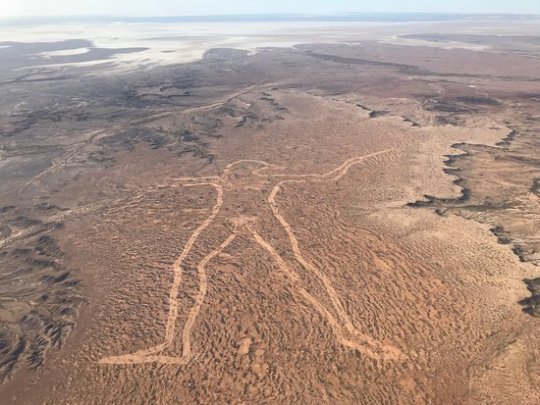
Chocolate Hills – Bohol Island in the Philippines during the dry season, you might notice what looks like thousands of chocolate kisses protruding from the terrain. These mysterious conical mounds are known as the Chocolate Hills. There are approximately 1,268 individual hills, their heights ranging from 100 to 160 feet, though the highest is almost 400 feet high. The hills, which are almost all symmetrical, consist of grass-covered limestone and turn brown during the dry season. Despite the abundance of hills, it is unclear how they were formed. There are multiple geological explanations ranging from oceanic volcano activity to limestone weathering. Numerous legends and tales also exist to explain the Chocolate Hills.
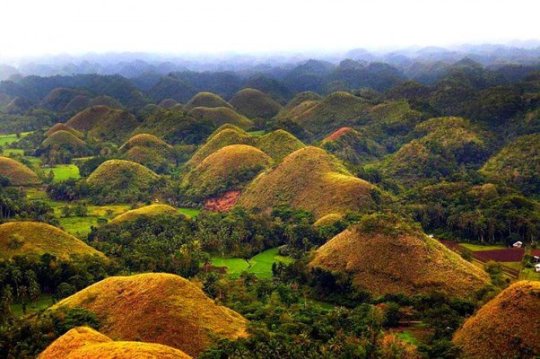
Giants Nest – In 1949 a geologist named Vadim Kolpakov discovered a large mound of limestone in the north of the Irkutsk region in southeastern Siberia. The cone is curiously shaped with a crater at the top and a small mound in the center. The mound is about 40 meters high and 100 meters across at the base. The smaller mound at the top is about 12 meters high. The crater was named Patomskiy, after a nearby river, but local residents call it “the Fiery Eagle’s Nest”. Since the discovery of the crater, there have been many theories as to what could have created it. For a long time it was believed to be a meteorite impact structure. Some linked it to the Tunguska meteorite, whose remains have never been discovered. But the crater does not resemble any other known meteorite site. Even now, the origin of the crater is not discovered.
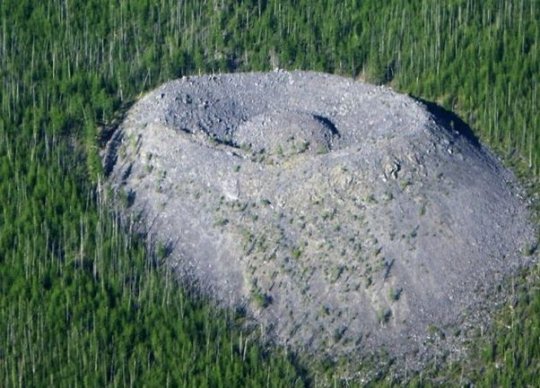
Richat Structure – In the midst of vast, vacant Sahara desert, just outside of Ouadane, Mauritania, lies a 30-mile wide geological oddity known the Richat Structure, sometimes called the “Eye of Africa.” From space, this natural curiosity forms a distinct and unmistakable bull’s-eye that once served as a geographical landmark for early astronauts as they passed over the Sahara. Once thought to be an impact crater due to its circularity, the unusual formation is now widely believed to have been caused by the erosion of a geological dome formed by pressure from a bulb of molten magma below.
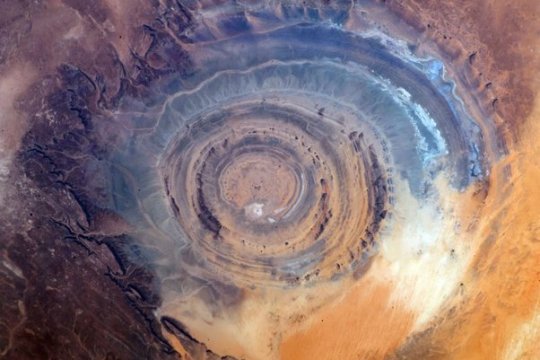
Plain of Jars – The Plain of Jars is a collection of large stone jars interspersed throughout the Xieng Khouang plain in the Lao Highlands. The stone structures are mostly made of sedimentary rock and, ranging from 3 to 10 feet in height, each can weigh up to 14 tons. To date, the origin of the jars is unknown, though archaeologists believe that they were originally used between 1,500 and 2,000 years ago. Many researchers have theorized that the jars may have once served as funerals urns or food storage. As local Laotian legend would have it, the jars were created by Khun Cheung, an ancient king of giants who lived in the highlands. It is said that Cheung, after fighting a long and victorious battle, created the jars in order to brew huge amounts of celebratory lao lao rice wine.
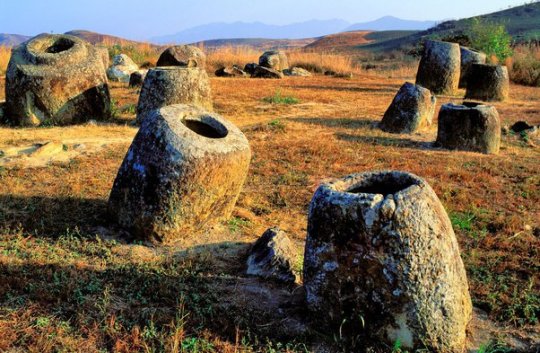
Giant’s Grave of Coddu Vecchiu – Giant’s or Tomba Dei giganti, are megalithic gallery graves that were used as public tombs during the Bronze Age. The massive gravestones were built by the Nuragic civilization, which existed in Sardinia from the 2nd millennium BCE. to the 2nd century CE. Despite the imaginative name, the sites were not the burial site of any giant; they were giant community burial chambers. Though we know the tombs had a funerary purpose, more questions remain. Little is known about the rituals or traditional beliefs that motivated their construction. Were they mass graves? Were they built to facilitate the journey into the afterlife? Since their existence has yet to be justified by scientific research, they have been credited to the supernatural, which has only increased their mystery. Legend also claims that yes, indeed, these were the tombs of powerful giants.
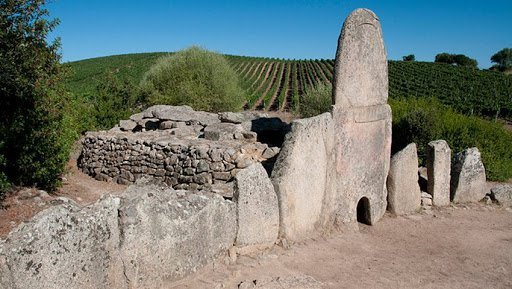
Zone of Silence – Pilot Francisco Sarabia was flying over a patch of desert land in Mexico when his instruments started to act increasingly odd. The man had to make an emergency landing in the middle of nowhere. Little did he know that this "nowhere" would be later dubbed "The Zone of Silence.” Weird radio silence isn't the only oddity of the creepy Zone. Like, what’s that weird trio that locals keep meeting in the Zone? They’re two men and a woman. Every time people see them, they’re wearing bizarre clothing that isn't suitable for a journey in the desert whatsoever. On top of all that, the Zone of Silence is known as a 50 km patch of deserted land where meteorites come crashing down on an eerily regular basis. On July 11, 1970, the US launched an ATHENA rocket from the Air Force base in Green River, Utah. The rocket was supposed to land somewhere in the area of White Sands in New Mexico. Instead, it went off course and, as if being pulled by some external force, crashed right in the heart of the Zone of Silence.
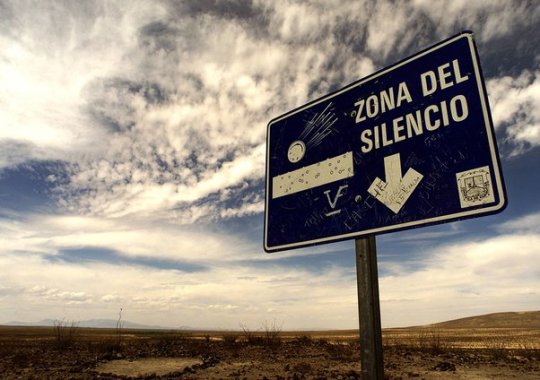
Michigan Triangle – Stretching from Ludington to Benton Harbor, Michigan and to Manitowoc, Wisconsin, the Lake Michigan Triangle has inspired numerous accounts of activity that are difficult to explain by rational thought. The mystery began in 1891, when a schooner named the Thomas Hume set off across the Lake to pick up lumber. Almost overnight in a torrent of wind, the Thomas Hume disappeared along with its crew of seven sailors. The wooden boat was never found. After the turn of the century, strange events happened at steady intervals. Of the more mysterious is the case of the Rosa Belle. In 1921 eleven people inside the ship, who were all members of the Benton Harbor House of David, disappeared and their ship was found overturned and floating in Lake Michigan. While it appeared that the ship had been damaged in a collision, no other ship had reported an accident and no other remains had been found.
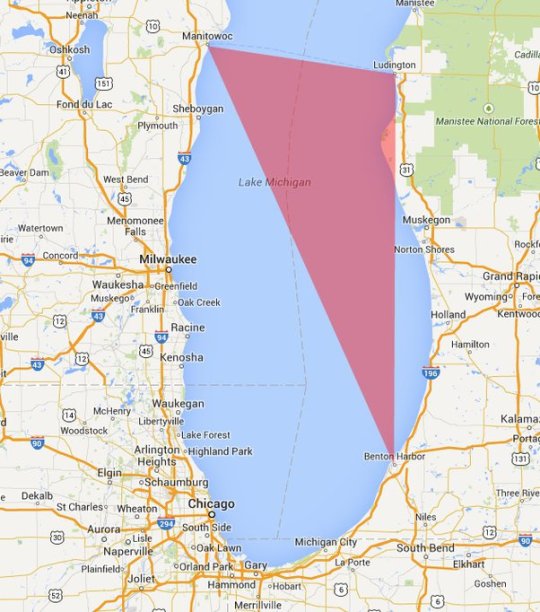
Alaska Triangle – The Alaska Triangle is a place in the untouched wilderness where mystery lingers and people go missing at a very high rate. The area began attracting public attention in October 1972, when a small, private plane carrying U.S. House Majority Leader Hale Boggs, Alaska Congressman Nick Begich seemingly vanished into thin air. For more than a month, 50 civilian planes and 40 military aircraft plus dozens of boats, covered a search area of 32,000 square miles, but no trace of the plane, the men, wreckage or debris were ever found. Afterward, more planes went down, hikers went missing, and Alaskan residents and tourists seemed to vanish into thin air. In fact, since 1988, more than 16,000 people have disappeared in the Alaska Triangle, with a missing person rate at more than twice the national average. These disappearances are blamed on everything from severe weather to aliens, to swirling energy vortexes, to an evil shape-shifting demon of Tlingit Indian lore called Kushtaka, with no scientific explanation to the disappearances till today.

The Initiation Well – The Initiation well is 88 feet deep well located on the land of Quinta da Regaleira. Actually, it was used for ceremonial purposes. There is another small well near this well. Both these wells are connected by tunnels. The larger well contains a 27-meter spiral staircase with several small landings and the smaller well contains straight stairs that connect a series of ring-shaped floors to one another. The smaller well is also called the 'Unfinished Well'. The depth of this larger well is equal to the four-storey building, which becomes narrower on going closer to the ground. It is believed that there is some kind of light comes out from the well inside the ground and comes outwards. Surprisingly, there is no system of light inside this well, then where from this light comes, it is the secret. Anyone who comes to visit here, always raises the question of where the light comes from inside the well? Till today this secret is unsolved.
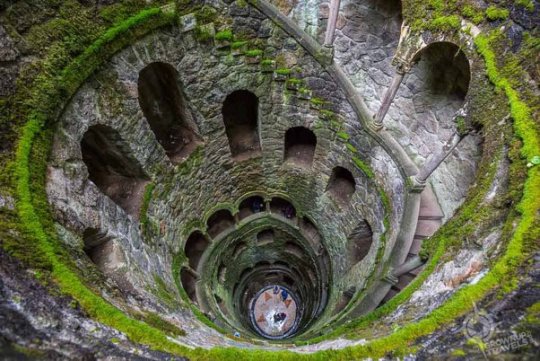
(Image Source : Google)
Thanks for Reading.
694 notes
·
View notes
Note
as a girl who loves to try keep up the lore on track and filed— any clue where the clip/interview is where daniel says that’s where he wants to retire to? <3
I believe Daniel says it in The Margaret River section of Drive the Dream.
Hitting the road for the second time, WA-born Formula 1 driver Daniel Ricciardo and his childhood friend Blake Mills have traversed the incredible countryside of the South West, driving through Western Australia’s premium wine region – Margaret River, where Daniel exclaims ‘I could genuinely see myself retiring there one day’. “It's like whatever weight you carry, that weight just lightens when you when you're in some of these places so that's kind of a feeling I get…Margaret River is a place I get that. I love the tall Karri trees, and you've got the forests and then you've got this beautiful coastline. At parts, you know, calm pristine beaches but then beyond maybe a reef break, there’s these massive waves that attract world class surfers. I don't know it's just everything about it,” Daniel said.
🫶🏻🫶🏻
12 notes
·
View notes
Note
My family came to Australia from the Rheinland centuries ago. I've never been there, what's it like?
Oh, wow...it's not easy, breaking down an entire region authentically. There are a lot of internal divides and differences between different sub-regions and the north vs the south and rural areas vs urban ones as well as the industries that shaped different areas - especially very agricultural areas vs regions shaped by mining.
It's also shaped by being near several national borders, with the south-west like the Saarland being very much shaped by its proximity to France and e.g. north-western regions being shaped by their proximity to the Benelux countries.
Carl Zuckmeyer once coined the expression of the Rhineland as the "Völkermühle" (people-mill, kind of like a melting pot)(as opposed to being defined by a certain ethnic group or a more strictly defined culture) because so many different people settled and passed through here throughout the centuries, all bringing together a lot of different influences and cultures, so it's very hard to say what's "typically Rhinish". Which is obviously true for a lot of places in Germany, but the Rhine amplifies the effect in a way.
Stereotypically, Rhinelanders have a bit of a reputation for being more extroverted and approachable than people from other German regions, though I think that's very much a point of view thing.
We have a lot of sub-regions with their own little cultures, some being VERY regional. Like, we have a bunch of stereotypes here e.g. about Eifelaner, Sauerländer, and so forth.
It's a great place if you like wine, castles and Karneval for sure.
18 notes
·
View notes
Text
If you want to understand how China abuses its power on the world stage, consider the lobsters. After the Australian prime minister called in April 2020 for an international investigation into the origins of the COVID-19 pandemic, the Chinese ambassador to Australia, Chen Jingye, ominously hinted at the economic backlash. “Maybe the ordinary [Chinese] people will say, ‘Why should we drink Australian wine? Eat Australian beef?’” he told the Australian Financial Review. It and other outraged statements from the Chinese government had all the subtlety of a mafia capo wandering into the neighborhood deli and saying, “Nice little business you got here—shame if anything happened to it.”
In the weeks and months that followed, China instituted onerous import inspections on Australian rock lobsters and instituted new bans on timber and barley shipments from Australia. Given that in 2018 and 2019, China had accounted for about 94 percent of the Australian rock lobster market, the new trade restrictions were clearly meant to devastate the country’s lobster industry.
China also invoked punishing tariffs on Australian wine—tariffs that in some cases reached 212 percent—and exports stopped almost overnight. One winemaker, Jaressa Estates in the South Australian wine growing region of McLaren Vale, had been selling about 7 million bottles a year to China, some 96 percent of its total business, and saw that number drop to zero. “The country’s biggest overseas market vanished almost immediately. Sales to China plummeted 97 percent that first year. Storage tanks overflowed with unsold vintages of shiraz and cabernet sauvignon, pressuring red grape prices,” the New York Times reported. “Now that its economy is entrenched as the world’s second largest, the threat of losing access to China’s 1.4 billion consumers is a stick that few countries or industries can afford to provoke.”
It was a brutal lesson for Australia. As one winemaker told CNN, perhaps Australia shouldn’t be so quick to cross China in the future—and it should have approached questions about COVID-19’s origins with more delicacy. “Australia’s only a little nation. We should have absolutely supported it, but we didn’t need to lead the charge,” the vintner said. All told, Australia saw some $13 billion worth of exports targeted.
Outside the egregious Australian case, China has begun to wield the economic stick more regularly. For example, it halted salmon imports from Norway after the Nobel Peace Prize went to Chinese dissident Lio Xiaobo, punished Taiwan in 2022 with new restrictions on exporting pineapples, apples, and fish, and went after Lithuania when the Baltic country tried to strengthen ties with Taiwan. The wide-ranging Chinese move against Lithuania was unprecedented—extending not to just to obvious products like milk or peat but also against products manufactured with semiconductor chips made in Lithuania. As the New York Times wrote at the time, “China’s drive to punish Lithuania is a new level of vindictiveness.” The consequences for Lithuania were so dire that the German-Baltic Chamber of Commerce reported that the country’s high-tech industry faced an “existential” threat.
The most powerful voices in the global trade discussion largely stayed silent during these attacks. The European Union filed a perfunctory World Trade Organization complaint on Lithuania’s behalf but, as the New York Times reported, “otherwise largely left one of its smallest and weakest members to fend for itself,” and behind the scenes its officials urged Vilnius officials to appease China. “To use a Chinese phrase, they are killing the chicken to scare the monkey, particularly the big German monkey,” one European think tank leader said publicly. “Many European leaders look at Lithuania and say, ‘My God, we are not going to do anything to upset China.’”
And while some U.S. officials held performative tastings of Australian wine, the United States failed to step in to stabilize or support Australia, Norway, Taiwan, or Lithuania. There were no high-profile “Berlin Airlifts” of pineapples to U.S. grocery stores, tanker convoys of Australian Shiraz rolling up the Capital Beltway, or “Buy Baltic” public service announcements to encourage consumers and corporate leaders to look to Lithuanian suppliers. There was no coordinated effort to build a coalition to implement an emergency adjustment of tariffs on Australian wine or lobster, let alone to help the affected industries find new commercial buyers.
Perhaps it’s easy to write off such American reluctance as our own strain of protectionism—maybe the government didn’t want to be accused of undercutting Hawaiian pineapples or promoting foreign competitors to California Zinfadels—but the truth is that even at home the United States has failed to stand up for our industries when China targeted them. We didn’t support American airlines and hospitality companies when China pressured them to remove Taiwan’s name from their maps; nor did the United States government stand up meaningfully for the free speech of NBA players who criticized China.
China is learning, again and again, that bullying works, mastering the 21st-century toolkit of economic statecraft and warfare. As Bethany Allen, a journalist who has covered China for a decade, writes in her book, Beijing Rules: How China Weaponized Its Economy to Confront the World, “If we speak the language of markets … then China hasn’t just learned that language. It has learned to speak it louder than anyone else.” The Chinese Communist Party’s “authoritarian style of state capitalism,” Allen argues, means it “is willing to draw on its full arsenal of leverage, influence, charm, deception, and coercion.” And China has begun to deploy those tools all too frequently—leading to very real questions about whether anyone, companies or nation-states, can afford to be economically reliant on China.
The United States needs to do better—for ourselves and our allies. Strong allies are not going to help only out of self-interest, they’re going to do it because they want to follow their values and principles—and we have to make it easier for countries who want to help us counter China. We need to create an umbrella that shields countries, companies, and individuals when they take on China’s attempts at hegemonic thought and action.
Critical to any global strategy to counter China is building and securing the series of bilateral relationships and multilateral institutions and alliances that helped the West win Cold War I. We have to make it easy for our allies—and desired potential allies—to say yes to such alliances. China is surrounded by many relatively small and weak countries that need real reassurances, both security and economic, that if they side with the United States in a regional coalition they won’t be out in the cold.
Even countries like South Korea, Japan, and Australia that are G-20 countries with advanced economies and trillion-dollar-plus GDPs are small compared to the behemoths like China and the United States, especially if they’re left geopolitically isolated.
Beyond ad hoc responses to pressure on our friends when they stand up to China—especially but not only when they’re acting at our request—the United States needs to figure out a new alliance framework to deter such actions from China in the future. China needs to know that bullying won’t work.
On the security front, there’s little value in the Indo-Pacific in a replacement for SEATO, the 20-year attempt to build a Southeast Asia alliance like NATO that ended in 1977 after never achieving a working military structure. (One British diplomat called the alliance a “zoo of paper tigers.”) Today, too many of the countries across the Indo-Pacific are already protected by bilateral security pacts with the United States to bother joining a larger formal security alliance. For example, given that both Japan and the Philippines have their own security pacts with the United States, it’s not entirely clear what domestic political appetite there would be for, say, the Philippines to be treaty-bound to defend Japan if it’s attacked.
Instead of a military security alliance in the Indo-Pacific, we should be looking to build a new—and global—economic security alliance. America should lead the way in creating a new organization—call it something like the Treaty of Allied Market Economies (TAME), an “economic NATO” alliance of European and Indo-Pacific nations with open-market economies. Together, the partners in this alliance would respond as a unified block to political and economic pressure from China—or any other economic aggressor, for that matter—through a combination of trade barriers, sanctions, and export controls.
In some ways, this alliance would look similar to the coordinated but independent action that the West took in levying unprecedented sanctions against Russia after its Ukraine invasion. As an additional carrot to joining such an alliance, like-minded members could all share increased trade benefits in the form of tariff cuts, regulatory cooperation, and enhanced investment terms.
Beyond formal joint economic punishment of an aggressor, such an alliance could also plan for and commit to repairing and replacing real economic harms that member countries face when hit with retaliatory tariffs or trade wars. Such “trade diversion” often occurs in the market anyway. As one market closes, another opens—and we know that, in part, because of China’s actions against Australia. Markets are adaptable and most goods can flow elsewhere, especially if protectionist tariffs don’t stand in the way. It’s why Australia, for instance, weathered some of China’s aggressive moves better than anticipated. In particular, the Australian coal industry—which was also hit with punishing bans—turned out just fine because coal is such a fungible and high-demand product. “Once China banned imports of Australian coal in mid-2020, Chinese utilities had to turn to Russian and Indonesian suppliers instead. This, in turn, took Russian and Indonesian coal off the market, creating demand gaps in India, Japan, and South Korea—which Australia’s stranded coal was able to fill,” Foreign Policy noted. “The result of decoupling for one of Australia’s core industries was therefore just a game of musical chairs—a rearrangement of who traded with whom, not a material injury.”
One of the reasons that NATO has never had to invoke Article 5 against another nation-state attack—the only time it’s ever been used was after Sept. 11 against al Qaeda—is precisely because of how strong all other countries know the response from the combined NATO force would be.
The same should be true on the economic front. As Daleep Singh, a National Security Council official who helped coordinate the U.S. response to Ukraine, said, “The best sanctions are the ones that never have to get used.” China might very well think twice before weaponizing its trading strength if it understood the combined—and severe—penalties it might face in taking such action and that even if it did launch a trade war, it wouldn’t necessarily inflict much economic harm to begin with.
There’s enough evidence of China’s willingness to inflict economic pain for political gain across Asia and Europe that a well-crafted TAME organization would likely attract a long line of participants—many countries across the globe are becoming increasingly concerned about Chinese belligerent behavior, and there is safety in numbers. While it is unlikely that some large countries with significant economic dependence on China, such as France and Germany, would rush to join this new alliance, states that have already found themselves on the receiving end of Chinese coercion in the past—such as Australia, Norway, Sweden, Japan, the Czech Republic, Lithuania, the Philippines, and Taiwan itself, among others—are prime candidates for initial membership. Over time, as TAME membership grows in numbers, combined economic power, and market size, it will become a magnet too attractive for other market economies to avoid, especially if China continues to engage in brutish bullying tactics around the world.
12 notes
·
View notes
Text
Holidays 1.27
Holidays
Apollo I Tragedy Day
Big Snow Day
Birth of Uncanny Conjectures Day
Cavadee (Mauritius)
Ceasefire Day (Vietnam War; 1973)
Day of Fatherland Defenders (Turkmenistan)
Day of the Lifting of the Siege of Leningrad (Russia)
Discovery Day (Antarctica)
e-Day
Electric Lamp Day
Everyones Unbirthday
Eugene Viollet-le-Duc Day
Family Literacy Day (Canada)
Fats Domino Day
Festival of Root Vibrations
International Day od Restorative Conservation
International Outer Space Day
Ka Moloka'i Makahiki (Molokai, Hawaii)
Kids & Vaccines Day (Canada)
Let There Be Light Day
Liberation of the Remaining Inmates of Auschwitz (a.k.a. ...
Auschwitz Day of Holocaust and Genocide Remembrance (Denmark)
Commemoration Day for the Victims of National Socialism (Tag des Gedenkens an die Opfer des Nationalsozialismus; Germany)
Day for Holocaust Remembrance and for the Prevention of Crimes against Humanity (Spain)
Day of Remembrance for Victims of Nazism
Day of Remembrance of the Holocaust and for the Prevention of Crimes against Humanity (Croatia)
Day of the Tragedy and Heroism of the Jews (Azerbaijan)
Dzien Pamieci Ofiar Nazizmu (The Memorial Day for the Victims of Nazism; Poland)
Holocaust Memorial Day (Luxembourg, Norway, UK, Ukraine)
Holocaust Remembrance Day (Estonia, Serbia, Slovenia, Sweden)
Holocaust Remembrance Day and the "Day of the Salvation of the Bulgarian Jews and of the Victims of the Holocaust and of the Crimes against Humanity" (Bulgaria)
Il Giorno della Memoria (Memorial Day; Italy)
International Day of Commemoration in Memory of the Victims of the Holocaust (Europe)
International Holocaust Remembrance Day (UN)
Memorial Day (Italy)
Memorial Day against Violence and Racism in Memory on the Victims of National Socialism (Austria)
Memorial Day for the Victims of National Socialism (Germany)
National Day of Commemorating he Holocaust (Romania)
National Holocaust Memorial Day (Greece, UK)
大屠殺陣亡將士紀念日 (Dà túshā zhènwáng jiàngshì jìniàn rì; Taiwan)
Lightbulb Day
Listen to Classical Music During Lunch Day
Mad Tea Party Day
Memorial Day of Purges (Finland)
Mézéréon Day (French Republic)
Mozart Day
National Activity Professionals Day
National Bible Day (Philippines)
National Boat Day (Australia)
National Costello Syndrome Awareness Day
National Heroes Day (Cayman Islands)
National Kazoo Day
National National Geographic Day
National Toilet Day (a.k.a. Thomas Crapper Day)
127 Day (South Korea)
Parent Mental Health Day (UK)
Perfect Fool Day
Public Employment Service Worker’s Day (Poland)
Punch the Clock Day
Rabbit Hole Day
SmallPitch Pitch Day
Spirituality Day (Monaco)
Thomas Crapper Day
Vietnam Peace Day (Vietnam)
Water Conservation Day
World Breast Pumping Day
World Day of Regional Anesthesia & Pain medicine
World Day Without Internet (Russia)
Food & Drink Celebrations
Brussels Lace Day
International Port Wine Day
National Chocolate Cake Day
Nature Celebrations
Rowan Day (Not Lazy; Korean Birth Flowers)
Independence, Flag & Related Days
Aysellant (Declared; 2011) [unrecognized]
Flag Day (Indonesia)
Greece (Declared; 1822)
Kingdom of Liahonia (Declared; 2020) [unrecognized]
New Year’s Days
Chinese New Year’s Eve Holiday
Get Holiday (Vietnam)
Seol-nal Holiday (South Korea)
4th & Last Monday in January
Aukland Day (New Zealand) [Monday closest to 29th]
Better Business Communication Day [4th Monday]
Blue Monday [Monday of Last Full Week]
Bubble Wrap Appreciation Day [Last Monday]
Community Manager Appreciation Day [4th Monday]
Cyber Monday (Russia) [Last Monday]
Meatless Monday [Last Monday of Each Month]
Meditation Monday [Every Monday]
Mellow Monday [4th Monday of Each Month]
Monday Musings [Every Monday]
Moody Monday [Last Monday of Each Month]
Motivation Monday [Every Monday]
Mushroom Monday [4th Monday of Each Month]
Nelson Day (New Zealand) [Monday closest to 29th]
Northland Anniversary Day (New Zealand) [Monday closest to 29th]
Weekly Holidays beginning January 27 (Last Week of January)
Farmhouse Breakfast Week (UK) [thru 1.31] (Last Week)
International Green Week
International Printing Week
Mozart Week
National Clean Out Your Inbox Week (thru 1.31)
National Cowboy Poetry Gathering Week (thru 2.1)
National Glaucoma Week
International Handwriting Analysis Week Week
National Medical Group Practice Week (thru 1.31) [M-F from 4th Monday]
Tax Identity Theft Week (thru 1.31) [M-F from 4th Monday]
Triangle Restaurant Week (Raleigh, North Carolina) [thru 2.2]
Festivals Beginning January 27, 2025
St. Moritz Gourmet Festival (St. Moritz, Switzerland) [thru 2.1]
Feast Days
Angela Merici (Christian; Virgin)
Arlene the Aardvark (Muppetism)
Свети Сава (St. Sava’s Day a.k.a. Spirituality Day; Serbia)
Chrysostom (Christian; Saint)
Day of Fatherland Defenders (Turkmenistan)
Day of Ishtar (Assyrian/Babylonian Goddess of Love; Everyday Wicca)
Day of the Dioscuri (Pagan)
Dévote’s Day (a.k.a. Devota; Christian; Saint) [Monaco]
Difficult People to Talk To Day (Celtic Book of Days)
Enrique de Ossó y Cercelló (Christian; Saint)
Feast Day of Thoth, the Magician’s Magician (Starza Pagan Book of Days)
Feast of Castor and Pollux (Ancient Rome)
Feast of the Translation of the Relics of Saint John Chrysostom (Christian)
Haroun-al-Raschid (Positivist; Saint)
Iroquois Mid-Winter Ceremony (Native American)
John Chrysostom (translation of relics) (Anglican, Lutheran, Eastern Orthodox)
Julian of Le Mans (Christian; Saint)
Llama Day (Pastafarian)
Lewis Carrol (Humanism; Writerism)
Lydia, Dorcas and Phoebe, Helpers of the Apostles (Lutheran)
Marius (Christian; Saint)
Michael Jackson Day (Church of the SubGenius; Saint)
Michiel van Musscher (Artology)
Mordecai Richler (Writerism)
Nino, Enlightener of Georgia (Christian; Saint)
Paul Joseph Nardini (Christian; Blessed)
Samaleswari Temple Inauguration (Odisha, India)
Sarkis the Warrior (Armenian Church)
Sava (Serbia)
Vitalian, pope (Christian; Saint)
Lunar Calendar Holidays
Chinese: Month 12 (Ding-Chou), Day 28 (Bing-Shen)
Day Pillar: Fire Monkey
12-Day Officers/12 Gods: Danger Day (危 Wei) [Auspicious]
Holidays: Chinese New Year’s Eve Holiday
Islamic Lunar Holidays
The Prophet’s Ascension (a.k.a. ...
Al Isra et Al Mirage (Djibouti)
Isra and Miraj (Kuwait)
Isra Mikraj (Brunei)
Isra’ Mi’raj Nabi Muhammed SAW (Indonesia)
Lailat al Miraj
Leilat al-Meiraj (Comoros)
Maha Shivaratri (South Africa, UK, US)
Miradji (Matotte)
The Prophet’s Ascension (West Bank and Gaza)
Secular Saints Days
Hendrick Avercamp (Art)
Mikhail Baryshnikov (Dance)
Bobby ‘Blue’ Bland (Music)
Lewis Carroll (Literature)
John Collier (Art)
Alan Cumming (Entertainment)
Bridget Fonda (Entertainment)
Jacques Hnizdovsky (Art)
Elmore James (Music)
Jerome Kern (Music)
Arkhip Kuindzhi (Art)
Peter Laird (Art)
Seison Maeda (Art)
Dmitri Mendeleev (Science)
Frank Miller (Art)
Wolfgang Amadeus Mozart (Music)
Ignacio Noé (Art)
Patton Oswalt (Entertainment)
Samuel Palmer (Art)
Donna Reed (Entertainment)
Mordecai Richler (Literature)
Cal Schenkel (Art)
Lucky & Unlucky Days
Fortunate Day (Pagan) [5 of 53]
Sakimake (先負 Japan) [Bad luck in the morning, good luck in the afternoon.]
Premieres
Africa Squeaks (WB LT Cartoon; 1940)
Animated Crosswords (Banner Cartoon; 1925)
Before Sunrise (Film; 1995)
Betty Boop’s Crazy Inventions (Fleischer Betty Boop Cartoon; 1933)
Billboard Frolics (WB MM Cartoon; 1936)
Billy Sunday’s Tabernacle (Hearst-Pathe News Cartoon; 1917)
Boris Godunov, by Modest Mussorgsky (Opera; 1874)
The Break of Day (Aesop’s Film Fable Cartoon; 1929)
Camping Out (Mickey Mouse Disney Cartoon; 1934)
The Castle, Franz Kafka (Novel; 1926)
The City and the Stars, by Arthur C. Clarke (Novel; 1956)
Customers Wanted (Fleischer Popeye Cartoon; 1939)
Draftee Daffy (WB LT Cartoon; 1945)
The Drowned World, by J.G. Ballard (Novel; 1962)
Elementary, My Dear [#2] (Multiplication Rock Cartoon; Schoolhouse Rock; 1973)
The Fighting 69th (Film; 1940)
The Flying Sorceress (Tom & Jerry Cartoon; 1956)
Fresh Laid Plans (Fun & Facts About America MGM Cartoon; 1951)
The Grey (Film; 2012)
Heartbreak Hotel, by Elvis Presley (Song; 1956)
How Green Is My Spinach (Fleischer/Famous Popeye Cartoon; 1950)
Instant Karma, written and recorded by John Lennon (Song; 1970)
Justice League: Throne of Atlantis (WB Animated Film; 2015)
Krazy’s Bear Tale (Krazy Kat Cartoon; 1939)
Last Tango in Paris (Film; 1973)
Laverne & Shirley (TV Series; 1976)
The Man, by Taylor Swift (Song; 2020)
Man on a Ledge (Film; 2012)
Mighty Hunters (WB MM Cartoon; 1940)
Misguided Missile (Woody Woodpecker Cartoon; 1958)
Mississippi Burning (Film; 1989)
Moondance, by Van Morrison (Album; 1970)
Mouse Trappers (Andy Panda Cartoon; 1941)
My Friend the Monkey (Betty Boop Cartoon; 1939)
Nanny McPhee (Film; 2006)
National Geographic Society (Adventure Club; 1888)
Nightwing and Robin (WB Animated Film; 2015)
One For the Money (Film; 2012)
One Gun Gary in Nick of Time (Terrytoons Cartoon; 1939)
Operation Paciific (Film; 1951)
Pettin’ in the Park (WB MM Cartoon; 1934)
Piano Sonata in B Minor, by Franz Liszt (Piano Sonata; 1857)
A Picture (Coca-Cola Ad UPA Cartoon; 1958)
The Police Dog on the Wire (Paramount-Bray Cartoon; 1916)
Resident Alien (TV Series; 2021)
Resident Evil: The Final Chapter (Film; 2017)
Rheumatics (Heasrt-Vitagraph News Pictorial Cartoon; 1918)
The Seeds of Time, by John Wyndham (Short Stories; 1956)
Shelby GT350 (Automobile; 1965)
Shōgun, by James Clavell (Novel; 1975)
Shrinking (TV Series; 2023)
Silkwood (Film; 1984)
Sittin’ On the Dock of the Bay, by Otis Redding (Song; 1968)
Soft Ball Game (Oswald the Lucky Rabbit Cartoon; 1936)
Spare the Child (Family Circus Fleischer Jolly Frolics Cartoon; 1955)
The Subterraneans, by Jack Kerouac (Novel; 1958)
Tom-ic Energy (Tom & Jerry Cartoon; 1965)
Toy Time (Aesop’s Sound Fable Cartoon; 1931)
Tumble Down Town (Aesop’s Sound Fable Cartoon; 1933)
The Turn of the Screw, by Henry James (Novel; 1898)
University of Georgia (School; 1801)
Wide Open Spaces, by The Dixie Chicks (Album; 1998)
Today’s Name Days
Angela, Julian (Austria)
Anđela, Anđelka, Julijan (Croatia)
Ingrid (Czech Republic)
Chrysostomus (Denmark)
Vilja, Vilje (Estonia)
Viljo (Finland)
Angèle (France)
Alrun, Angela, Gerd (Germany)
Chrysostomos (Greece)
Angelika (Hungary)
Angela, Elvira (Italy)
Ildze, Ilze, Izolde (Latvia)
Ilona, Jogundas, Jogundė, Natalis, Vytenis (Lithuania)
Gaute, Gry, Gurli (Norway)
Angelika, Ilona, Jan Chryzostom, Julian, Przybysław (Poland)
Ioan (Romania)
Nina (Russia)
Bohuš (Slovakia)
Ángela (Spain)
Göta, Göte (Sweden)
Buck, Buckley, Floyd, Keith, Lloyd, Logan (USA)
Today’s National Name Days
National Lloyd Day
Today is Also…
Day of Year: Day 27 of 2025; 338 days remaining in the year
ISO Week: Day 1 of Week 5 of 2025
Celtic Tree Calendar: Luis (Rowan) [Day 7 of 28]
Chinese: Month 12 (Ding-Chou), Day 28 (Bing-Shen)
Chinese Year of the: Dragon 4722 (until January 29, 2025) [Jia-Wu]
Coptic: 19 Tubah 1741
Druid Tree Calendar: Cypress (Jan 25-Feb 3) [Day 3 of 15]
Hebrew: 27 Teveth 5785
Islamic: 27 Rajab 1446
J Cal: 27 White; Sixthday [27 of 30]
Julian: 14 January 2025
Moon: 4%: Waning Crescent
Positivist: 27 Moses (1st Month) [Haroun-al-Raschid]
Runic Half Month: Elhaz (Elk) [Day 6 of 15]
Season: Winter (Day 38 of 90)
Week: 4th & Last Week of January
Zodiac:
Tropical (Typical) Zodiac: Aquarius (Day 8 of 30)
Sidereal Zodiac: Capricorn (Day 13 of 29)
Schmidt Zodiac: Capricorn (Day 2 of 27)
IAU Boundaries (Current) Zodiac: Capricorn (Day 8 of 28)
IAU Boundaries (1977) Zodiac: Capricornus (Day 9 of 28)
2 notes
·
View notes
Text
Holidays 11.22
Holidays
Alice's Restaurant Massacre Day
Arbor Day (British Virgin Islands)
Bank Workers’ Day (Armenia)
Black Entrepreneurs Day
Conspiracy Theory Day
Day of Justice (Azerbaijan)
Day of Music (Spain)
Day of Remembrance for President John F. Kennedy
Day of the Albanian Alphabet (Albania)
Day of the Andalusian Gypsy (Spain)
Family Day (Palau)s
Go For A Ride Day
Good Married Couple Day (a.k.a. Good Husband & Wife Day or Good Spouses Day; Japan)
Good Twin Tail Day (Japan)
Hockey Day
Humane Society Day
International Chick Tract Day
International Ewing’s Sarcoma Awareness Day
International Musician’s Day
Isfahan National Day (Iran)
JFK Assassination Day
Justice Workers’ Day (Azerbaijan)
Kanakdasa Jayanti (Karnataka, India)
Love Your Freckles Day
Love Your Own Country Day
Music Day (Spain)
Musician’s Day (Mexico)
National Agriculture & Related Industries Day (Australia)
National Amelia Day
National Aron Day
National Dental Dam Day
National Dental Nurses Day (UK)
National Housing Strategy Day (Canada)
National Jukebox Day
National Larimar Day (Dominican Republic)
National Nathan Day
National Poetry Day (Philippines)
National Senior Dog Day
National Stop the Violence Day
National Yeti Day
Phonograph Day
Pajama Day (Ireland)
Prosecutors’ Day (Kyrgyzstan)
Psychologist Day (Russia)
Repentence Day (Sachsen, Germany)
Skywriting Day
Slumber Party Day
Start Your Own Country Day
Substitute Educators Day
Teacher’s Day (Costa Rica)
Turnip Day (French Republic)
22q Awareness Day
White Album Day
World Day of the Schnauzer
World Vasectomy Day
Xanthippe Asteroid Day
Food & Drink Celebrations
Cranberry Relish Day
Danish Pastry Day (Wienerbrödets Dag; Sweden)
International Stilton Day
Kimchi Day (South Korea; California)
National Cashew Day
Independence & Related Days
Anniversary of Portuguese Aggression (Republic of Guinea)
Duvalia (Declared; 2015) [unrecognized]
Lebanon (from France, 1943)
Regelis (Declared; 1999) [unrecognized]
4th Friday in November
Comfort Food Friday [Every Friday]
Five For Friday [Every Friday]
Flapjack Friday [4th Friday of Each Month]
Flashback Friday [Every Friday]
Flirtatious Friday [4th Friday of Each Month]
Friday Finds [Every Friday]
Fry Day (Pastafarian; Fritism) [Every Friday]
National Day of Thanksgiving (Turks & Caicos Islands) [4th Friday]
Stars in Our Schools Day (UK) [4th Friday]
TGIF (Thank God It's Friday) [Every Friday]
Weekly Holidays beginning November 22 (3rd Full Week of November)
Deck the Halls Weekend (Seneca Lake region, New York) [thru 11.24]
National Farm-City Week (thru 11.28) [Week Ending On Thanksgiving]
Festivals Beginning November 22, 2024
America's Hometown Thanksgiving (Plymouth, Massachusetts) [thru 11.24]
Beaujolais & Beyond (Saint Paul, Minnesota)
Beef Tongue Cook-Off (Eunice, Louisiana) [thru 11.23]
Bruges Christmas Market (Bruges, Belgium) [thru 1.5.2025]
Cayman Brac (Cayman Islands) [thru 11.24]
Denver Christmas Show (Denver, Colorado) [thru 11.24]
Downtown Baraboo Wine Walk (Baraboo, Wisconsin)
Downtown Raleigh Tree Lighting Celebration (Raleigh, North Carolina)
FOBAB [Festival of Wood & Barrel-Aged Beer] (Chicago, Illinois) [thru 11.23]
Mountain Mandarin Festival (Auburn, California) [thru 11.24]
National Biodynamic Conference (Phoenixville, Pennsylvania) [thru 11.24]
Night of the Proms (Antwerp, Belgium) [thru 11.24]
Plant City Pig Jam (Plant City, Florida) [thru 11.23]
Salute to Ranching Holiday Dinner-Dance & Auction (Workman's Creek, Arizona)
Silver Bells in the City (Lansing, Michigan)
Tallinn Christmas Market (Tallinn, Estonia) [thru 12.27]
Whiskies of the World (Chicago, Illinois)
Feast Days
Amphilochius of Iconium (Christian; Saint)
André Gide (Writerism)
Blackbeard Memorial Day (Pastafarian)
Cecilia (Christian; Saint) [Music]
Christian Rohlfs (Artology)
Clone Day (Church of the SubGenius)
Colbert (Positivist; Saint)
Descending Day of Lord Buddha (Lhabab Duechen) [Bhutan]
Dispute-Settling Assizes (Shamanism)
Feast of Artemis (Moon Goddess; Ancient Greece; Starza Pagan Book of Days)
George (Eastern Orthodox; Georgia)
George Eliot (Writerism)
Herbert (Christian; Saint)
Ignaz Günther (Artology)
Jon Cleary (Writerism)
Light Snow (Chinese Farmer’s Calendar)
Marjane Satrapi (Artology; Writerism)
Miguel Covarrubias (Artology)
Olga Kisseleva (Artology)
Philemon and Appia (Christian; Martyrs)
Pragmatius of Autun (Christian; Saint)
Sagittarius zodiac sign begins
Samonios (Seed-Fall; Celtic Book of Days)
Theodorus the Studite (Christian; Saint)
Vernon the Grizzly Bear (Muppetism)
Ydalir (festival to Ullr, god of archery & skiing; Ancient Norse)
Lucky & Unlucky Days
Sensho (先勝 Japan) [Good luck in the morning, bad luck in the afternoon.]
Premieres
The Addams Family (Film; 1991)
The Air Hostess (Phantasies Cartoon; 1937)
An American Tail: Fievel Goes West (Animated Film; 1991)
Back to the Future Part II (Film; 1989)
The Beatles [The White Album] (Album; 1968)
Beauty and the Beast (Animated Disney Film; 1991)
Bettie Page Reveals All (Documentary Film; 2013)
Blue Hawaii (Film; 1961) [Elvis Presley #8]
Boléro, by Maurice Ravel (Orchestral Work; 1928)
Captain Kidd (Film; 1945)
Casino (Film; 1995)
The Check’s in the Mail (Money Rock Cartoon; Schoolhouse Rock; 1996)
Clambake (Film; 1967)
Coco (Animated Film; 2017)
Convict Concerto (Woody Woodpecker Cartoon; 1954)
Darkest Hour (Film; 2017)
Die Another Day (US Film; 2002) [James Bond #20]
For the Boys (Film; 1991)
Frida (Film; 2002)
Frozen (Animated Disney Film; 2013)
Frozen 2 (Animated Disney Film; 2019)
Goofy’s Glider (Disney Cartoon; 1940)
The Hunger Games: Catching Fire (Film; 2013)
Hypnotize, by System of a Down (Album; 2005)
Jack and the Beanstalk (Betty Boop Cartoon; 1931)
Jelly Roll Blues, recorded by Bunny Berigan (Song; 1938)
La Forza del Destino, by Giuseppe Verdi (Opera; 1862)
A Lyell Geste of Robyn Hood, by Winked de Word (History Book; 1495)
King Solomon’s Mines (Film; 1985)
Man of La Mancha (Broadway Musical; 1965)
Olaf’s Frozen Adventure (Disney Cartoon; 2017)
Once Upon a Studio (Disney Short Film; 2023)
Pink S.W.A.T. (Pink Panther Cartoon; 1978)
Power and Terror: Noam Chomsky in Our Times (Documentary Film; 2002)
Prefabricated Pink (Pink Panther Cartoon; 1967)
The Producers (Film; 1967)
Shanghai Woody (Woody Woodpecker Cartoon; 1971)
Shine (Film; 1996)
Star Trek: First Contact (Film; 1996)
Swann’s Wy, by Marcel Proust (Novel; 1913)
Throne of Blood (Film; 1961)
Toy Story (Animated Pixar Film; 1995) Vitalogy, by Pearl Jam (Album; 1994)
Wish (Animated Disney Film; 2023)
With the Beatles, by The Beatles (Album; 1963)
Yogi Bear and the Magical Flight of the Spruce Goose(Hanna-Barbera Animated TV Special; 1987)
Today’s Name Days
Cäcilia, Salvator (Austria)
Cecilija, Cilika, Dobrila, Filemon (Croatia)
Cecílie (Czech Republic)
Cecilia (Denmark)
Cecilia, Säsil, Silja, Silje, Sille (Estonia)
Cecilia, Seela, Selja, Silja (Finland)
Cécile (France)
Cäcilia, Rufus, Salvator, Silja (Germany)
Cecilia, Filemon, Filimon, Philimon, Valerios (Greece)
Cecília (Hungary)
Cecilia (Italy)
Aldis, Aldonis, Alfons, Alfonss, Alfs (Latvia)
Cecilija, Cilė, Dargintė, Steikintas (Lithuania)
Cecilie, Silje, Sissel (Norway)
Cecylia, Marek, Maur, Wszemiła (Poland)
Arhip. Filimon, Onism (România)
Cecília (Slovakia)
Cecilio, Filemón (Spain)
Cecilia, Sissela (Sweden)
Cecelia, Philemon, Yaropolk (Ukraine)
Abbey, Abbie, Abby, Abigail, Cecelia, Cecil, Cecilia, Cecily, Cecyl, Celia, Gail Gale, Galen, Gay, Gayle, Philemon, Philo, Shayla, Sheila (USA)
Today is Also…
Day of Year: Day 327 of 2024; 39 days remaining in the year
ISO: Day 5 of Week 47 of 2024
Celtic Tree Calendar: Hagal (Hailstone) [Day 27 of 28]
Chinese: Month 10 (Yi-Hai), Day 22 (Geng-Yin)
Chinese Year of the: Dragon 4722 (until January 29, 2025) [Wu-Chen]
Hebrew: 21 Heshvan 5785
Islamic: 20 Jumada I 1446
J Cal: 27 Wood; Sixthday [27 of 30]
Julian: 9 November 2024
Moon: 50%: 3rd Quarter
Positivist: 19 Frederic (12th Month) [Pombal / D’Aranda]
Runic Half Month: Is (Stasis) [Day 1 of 15]
Season: Autumn or Fall (Day 61 of 90)
Week: 3rd Full Week of November
Zodiac: Sagittarius (Day 1 of 30)
Calendar Changes
Is (Stasis) [Half-Month 23 of 24; Runic Half-Months] (thru 12.10)
Sagittarius (The Archer) begins [Zodiac Sign 9; thru 12.21]
2 notes
·
View notes
Text
Crew for Stan series Scrublands: Silver reflect on ideal coastal destination for TV production
written by Warren Hately | Augusta Margaret River Times

Producer Martha Coleman with actors Luke Arnold and Bella Heathcote alongside director Ben Young. Credit: David Dare Parker/Photograph by David Dare Parker
The cast and crew of Stan crime drama Scrublands have reported mixed feelings about their pending wrap on their season two shoot in Augusta.
Production has taken over the seaside town and brought a welcome boost to the economy at the outset of winter, before filming concludes on July 12.
Rhetoric aside, co-producer Martha Coleman from Third Act Stories and the Australian show’s leading stars expressed a deep fondness for the coastal hamlet.
Coleman told the Times the visiting film crew quickly felt at home in Augusta after residents embraced the production and opened their doors and businesses to the cast, which included lead actors Bella Heathcote and Luke Arnold.
But Coleman said many genuinely felt there was something “incredibly special” about Augusta and its surrounds and she urged local authorities to protect its existing character against future over-development.
“It’s like a coastal town from my childhood in that it hasn’t been ruined,” Coleman said.
“It’s not become something it’s not.
“It’s like the gift that keeps giving. We’ve got all of our locations there.”
Operating under the code name Silver, the Stan series sees Arnold’s journalist character return to his WA home town with his girlfriend, played by Heathcote.
As is typical of crime dramas, things soon turn pear-shaped.
Arnold said he appreciated the warm welcome from the Augusta community.
“It didn’t take long for people to start talking about wanting to move here,” he said.
“We couldn’t have asked for a more beautiful location both on-screen and off.
“Everybody is filling their weekends with incredible food, wine, and adventure.”
Coleman and Heathcote also talked up the region’s scenic beauty.
“Augusta is so stunningly beautiful and the people here have been nothing but warm and welcoming,” Heathcote said.
“The best thing about shooting in pre-existing locations is that it feels like I’ve been taken on this weeks-long tour of the town: from the lighthouse to Ellis Street Jetty and everything around and between.
“I’ll be sad to say goodbye.”
Coleman said scoping for the series was undertaken during a magical summer, but when wintry conditions set in on day one of shooting at the Ellis Street Jetty, the directors chose to lean into the powerful natural feel of the region.
That included long days shooting at Flinders and Hamelin Bay, which had transformed since summer from a pristine white-sand beach to a wild and seaweed-wracked locale.
“We shifted our focus on the location not being pristine, but powerful,” the co-producer said.
“We wanted a coastal town that hasn’t yet been gone over by the developers.”
Coleman herself had moved her company back to Perth during the pandemic and the partnership with east coast company Easy Tiger — rumoured to be shooting some additional scenes in Augusta for their separate production The Twelve — mean idyllic places like the town and other parts of the Margaret River region are likely to appear in future shows.
Coleman said despite the stiff drive from Perth, the region was relatively well set-up to support a burgeoning film industry and local and State authorities had “bent over backwards” to smooth out any problems.
The biggest challenge faced was with telecommunications.
The region’s woeful broadband and phone system have raised the ire of South West creatives for years, and while the Stan production had its own unit van to help when in dead zones like Hamelin Bay, greater investment was needed on that front if authorities wanted to get serious about supporting local creative industries, she said.
Source: The West Australia
4 notes
·
View notes
Text




















National Extra Virgin Olive Oil Day
Go to an olive oil tasting, try out a few kinds, or try your hand at any number of delicious recipes that use extra virgin olive oil for a healthy, tasty cuisine.
With the health benefits of olive oil on everyone’s lips and the movement toward more flavorful tastes, it is obvious that the the time is right for this 8,000 year old tradition to become an irresistible, world wide force.
Olive oil is the gold standard of all oils. Loaded with antioxidants, it is chock full of monounsaturated fat–which is one of the healthier fats that everyone needs in his or her diet. The Mediterranean Diet is considered the healthiest diet. The cornerstone and foundation of the Mediterranean Diet is extra virgin olive oil.
Olive oil is produced throughout the United States led by California (where 99% of olives are grown). Olive trees are also grown in Texas, Georgia, Arizona, Florida, Alabama, Oregon, and Hawaii (on the island of Maui).
History of Extra Virgin Olive Oil
Ever since the US’s first “foodie” President Thomas Jefferson proclaimed, “… the olive tree is surely the richest gift of heaven” and deemed olive oil a “necessity of life” (along with wine and books), olive oil was destined to have its own National Extra Virgin Olive Oil Day!
Olive Oil, itself, has a history that goes back as far as 6000 years, or perhaps even more, when the olive tree was cultivated and spread from Asia Minor to the Mediterranean regions it is now famous for. Over the centuries, olive has not only been used in food preparations, but also for cultural, religious and even beauty purposes.
Extra Virgin Olive Oil (EVOO) is the highest quality of the olive oils, extracted through grinding and pressing the olives, without the use of heat or chemicals in the extraction process. This makes EVOO particularly pure and also very good for the health. It tends to be darker in color than regular olive oils, with a dark yellow or green tinge that make some people refer to it as “liquid gold”. This oil has a distinctive flavor that some people think offers a bit of a spicy kick to it.
Since the Mediterranean Diet has come into the spotlight, many people are looking to Extra Virgin Olive Oil to provide them with an extra boost for the taste of their food as well as for their physical health.
Yes, EVOO is a bit pricier than the cost of regular olive oil, but the difference is completely worth it. It’s time to celebrate this marvelous day!
How to Celebrate National Extra Virgin Olive Oil Day
Celebrating Extra Virgin Olive Oil can be not only a learning experience and a boost to your health, but it can also just be a lot of fun! Use these tips for celebrating or come up with some new ones:
Begin Cooking with Extra Virgin Olive Oil
For those who have been using other types of oils, or just regular (not EVOO) olive oil, this is the perfect day to experiment by using this extraordinary oil in a variety of new recipes. And although it is traditionally thought to be used for cooking, don’t forget that it can be used for baking, drizzling over salads, as a dip for bread, or in a myriad of other ways.
Create An Olive Oil Experience or Adventure
Visit an olive orchard and olive mill where it’s possible to see the olives-to-olive oil process first hand. Olives are grown all over the world! Although many people think they might have to take a trip to Italy or Greece for this, they don’t! In the United States olives are grown in California, Oregon, Texas, Florida and a few other warm climate states. Other places include Peru, South Africa, Chile, Australia and even New Zealand.
Schedule a time to visit one of these lovely olive-producing farms to witness up close exactly how the olives grow in the orchards and what happens when they are pressed from the fruit into the oil. While there, be sure to pick up a bottle or two to take home!
Go Olive Oil Tasting at a Specialty Store
Just like wine tasting, there is such a thing as Olive Oil tasting! This is a great cultural and educational experience, as well as a delightful treat for the taste buds. Of course, many versions will be on offer. The hardest thing will be to choose which one(s) to purchase and take home.
Share Extra Virgin Olive Oil Fun on Social Media
Take photos of olive oil experiences and your favorite way to Drizzle it on . . . your favorite foods or your favorite ways to use olive oil for health, beauty, and around the house and post the photos on social media.
Source
#Lt. John C. Helmick Rest Area#Corning#Louis M. Martini Winery#olive tree#flora#nature#Oakville#Napa Valley#Yountville#Brix Restaurant & Gardens#one of my favorite restaurants#travel#summer 2019#2017#California#USA#original photography#bread#EVOO#Extra Virgin Olive Oil Day#ExtraVirginOliveOilDay#30 September#food#olives#Québec#Domaine Carneros#Spain#Bodegas Roda#Haro#vacation
5 notes
·
View notes
Text
Yalumba 2011 Old Bush Vine Grenache

Family-owned with reasonably-priced offerings (very much the antithesis of Penfolds), these are enough reasons to place Oz oldest family winery in a good light. And quality is high across the board. Bright and fragrant aromas reminiscent of brambly red fruit, strawberry and licorice. Very transparent with little oak in the way. Tastes inherently sweet but far from overripe. Only mid-weight, svelte mouthfeel. Feels genteel, sincere. Lovely stuff! — ★★★½
Appellation: Barossa Valley Region: Barossa Valley, South Australia, Australia Subzone: Cépage: 100% Grenache Abv: 14% Production: Élevage: Distributor: Monopole
Critic Reviews:
Vivid and open-textured, this bright red offers a lively mouth fell of guava, strawberry and spice flavors lilting through the finish. Drink now. Harvey Steiman (Wine Spectator, 06/30/2012) 89
Light, bright hue; a very attractive, light-bodied grenache, with red fruits ranging from red cherry to raspberry; minimal tannins and oak, and rightly so. James Halliday (Australian Wine Companion 2014, 10/07/2013)
2 notes
·
View notes
Text
ADELAIDE 26 & 27 April 2024
We took a day’s trip to the Barossa wine region on the 26th. We chose a trip that would include visiting some other places apart from vineyards for wine tasting!
We visited a village called Hahndorf in the Adelaide Hills which had been established by German immigrants in 1839. It was quaint with many old buildings. The village has retained many businesses with a German theme, although apparently the businesses are no longer owned by the descendants of the original immigrants. Here is the brewing company:

We drove from the Adelaide Hills into the Barossa Wine region. There were vineyards as far as we could see at times. We also saw huge areas of fruit trees growing as apparently there are huge fruit farms in this area.
We saw kangaroos in the Barossa region and some were close to the road:

During the day we visited three vineyards for wine tasting. In each of the first two vineyards we tried several wines. We learnt that fizzy red wine is very popular in Australia. At the second vineyard we had lunch as well. At this vineyard there was a display of old machinery near some of the vines:

The third vineyard gave us a different experience to the other two in that we tasted “meads” which are made from honey. They were delicious and a bit like a dessert wine. These were the bottles we tried:

After visiting a small chocolate making factory we finished our day trip with a visit to a cafe owned by Maggie Beer - Australia’s Mary Berry. The cafe has kitchen areas where Maggie Beer has been filmed for TV. There is a cookery school on the same site. We were able to have a cup of tea there and the grounds were stunning and very tranquil. The large pond had turtles swimming in it:

On the 27th we spent time in Adelaide. We walked through the pedestrianised shopping area. Although the city has skyscrapers it also has many older buildings directly next to the modern high rise towers. In the shopping district we found an old fashioned arcade:

We then visited the large fresh food market. It was very busy and we were really impressed with the range of produce. There were plenty of fruits and vegetables as well as meats and fish but also coffee beans and specialty sauces and vinegars. We enjoyed seeing all the stalls. People were arriving with large trolleys to buy fresh food. There were also many there enjoying a morning cup of coffee. There was even a stall specialising in produce from Kangaroo Island.

We then took a tram out to the coast to Glenelg to see the beach. The journey took about 40 minutes. This is the beach that those living in Adelaide must use in the summer:

After we had returned to the city centre we walked to see the River Torrens which runs through the city. This shows the area where there is a huge convention centre and entertainment district:

We then walked around the river area to see the Parliament building for South Australia, Government House and the University of Adelaide. Walking along the river we saw many rowing clubhouses as we had in Melbourne. We then finished our city exploration by visiting the city’s botanical gardens which were lovely:

We have enjoyed our visit to Adelaide as well as the surrounding areas.
2 notes
·
View notes
Photo
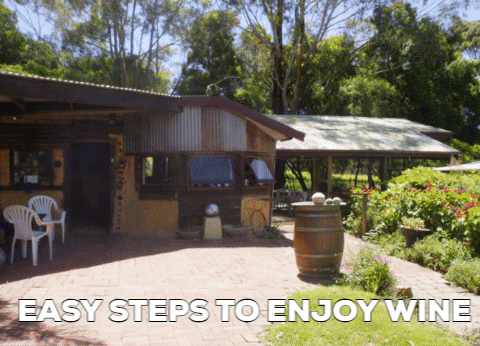
1. Visit Magpie Springs Sat + Sun
2. Buy wine3. Open bottle 4. Pour 5.Drink ...take some home....Enjoyment - job done
#giphy#red wine#white wine#wine lover#magpie springs#adelaide hills#adelaide hills wine region#see south australia#cellar door near mclaren vale#southaustralianwine#cellar door near willunga#adelaide wine experience#wine experience adelaide#south australian wineries#fleurieu wine#cellar door near meadows
0 notes
Text
Coonawarra Wineries: Where Tradition Meets Terroir
Introduction: The Vinicultural Marvel of Coonawarra Wineries
Nestled in the picturesque Limestone Coast of South Australia, Coonawarra stands as a beacon of vinicultural excellence. Its wineries, perched on the terra rossa soil, are not just places to taste exquisite wines; they are sanctuaries where tradition, passion, and terroir converge. Coonawarra wineries offer a profound exploration into the art of winemaking, inviting enthusiasts to revel in the flavors and aromas that define this unique region.
The Terroir of Coonawarra: Nature’s Canvas for Fine Wines
Coonawarra's terroir is its greatest asset. The vibrant red soil, a blend of clay and limestone, imparts a distinct minerality to the grapes grown here. Coupled with a cool maritime climate, this terroir becomes the canvas upon which winemakers paint their masterpieces. The Cabernet Sauvignon, in particular, thrives in this environment, producing wines of unparalleled depth and complexity. The unique characteristics of Coonawarra wines are a testament to this extraordinary marriage between soil and climate.
The Legacy of Coonawarra Winemakers: Artisans of Flavor
The winemakers of Coonawarra are not just cultivators; they are guardians of a rich legacy. Families have passed down their winemaking traditions through generations, each bottle a testament to years of expertise and dedication. Whether it's crafting bold Cabernets or delicate Chardonnays, these artisans infuse every drop with the essence of their land and heritage. Each winery carries a unique story, blending history with innovation, and offering a glimpse into the passionate world of Coonawarra winemaking.
Varietals: A Symphony of Tastes and Aromas
Coonawarra wineries boast an impressive array of varietals, each a tribute to the region's versatility and skill. The Cabernet Sauvignon, rightfully the flagship grape, is a bold revelation of blackcurrant, mint, and spice. Shiraz, with its deep plum and peppery notes, offers a robust alternative. Merlot, with its velvety texture and plum undertones, caters to those with a preference for softer reds. The whites, especially Chardonnay, add a touch of elegance with their citrus and melon nuances. Every varietal from Coonawarra is a testament to the region's mastery of the grapevine.
Cellar Doors and Tasting Experiences: A Sojourn for the Senses
Visiting a Coonawarra cellar door is akin to embarking on a sensory voyage. The lush vineyards, neatly rowed and basking in the Australian sun, set the stage for an unforgettable experience. Inside, wine enthusiasts are greeted by knowledgeable sommeliers who guide them through tastings of the finest vintages. These encounters are not just about the wines; they are conversations about the land, the grape, and the meticulous craftsmanship that goes into every bottle. It's an education in every sip, a communion with the very essence of Coonawarra.
Sustainable Practices: Nurturing Nature for Future Generations
Coonawarra winemakers recognize their responsibility towards the environment. Many wineries have adopted sustainable practices, embracing organic viticulture, water conservation, and eco-friendly initiatives. These efforts are not only a testament to their dedication to preserving the land but also a pledge to produce wines that are as responsible as they are delightful. Coonawarra's commitment to sustainability ensures that future generations can continue to revel in the region's vinicultural wonders.
Culinary Adventures: Pairing Perfection
Coonawarra wineries offer more than just wines; they invite guests on a culinary odyssey. Many estates boast exquisite restaurants where gourmet chefs create menus that harmonize seamlessly with the wines. From decadent cheese platters that elevate the tasting experience to meticulously crafted multi-course meals, the food and wine pairings in Coonawarra are a celebration of flavors. Each dish complements the wines, enhancing both the food and the drink and offering an epicurean delight for the senses.
Conclusion: Raising a Glass to Coonawarra’s Vinous Heritage
In the lush vineyards of Coonawarra, every grape carries a legacy, every bottle tells a story. Raising a glass of Coonawarra wine is not just a toast; it's a salute to generations of winemakers who have transformed humble grapes into liquid poetry. It's an acknowledgment of the land, the climate, and the passion that breathe life into every vintage. Coonawarra wineries are not just producers of wine; they are creators of memories, encapsulating the essence of a region where tradition meets terroir in every exquisite sip.
3 notes
·
View notes
Text
The Ocean AKA Biome Project
The ocean covers up Earth by about 70%
Ah, the ocean.
A place that is just water, fishes swimming around. And if you're lucky, you might see a beautiful and colorful coral reef.
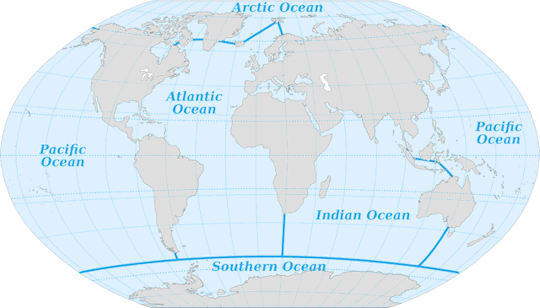
Characteristics of the Ocean:
The temperatures in the ocean are pretty low depending on how deep you go. Anywhere from -40 degrees Fahrenheit to over 100 degrees Fahrenheit. The coldest parts are the ones closest to the North and South poles.
The average precipitation of the ocean is 100 inches per year if it's average. Oceans also carry most of Earth's rain because the ocean is large and the water cycle runs quicker on oceans because oceans are made of water.
The wind in the ocean is pretty harsh because it's mostly happening on the surface, hence why fish tend to go with the currents of the ocean.
Yes, oceans do have seasons. Because it is caused by cycles in evaporation and precipitation that change in the weird thing known as the global weather cycle.
Plants in the ocean:
Seaweed is a plant near the surface parts of the ocean. The entire species adapted by evolving roots tough enough to avoid the ocean´s strong currents, but light enough to produce seeds.

Good seaweed.
Mermaid's wine glass is an type of algae that is one huge cell that is native in the Caribbean and southern Floridan oceans. This species adapted by evolving to grow on small rocks and coral.
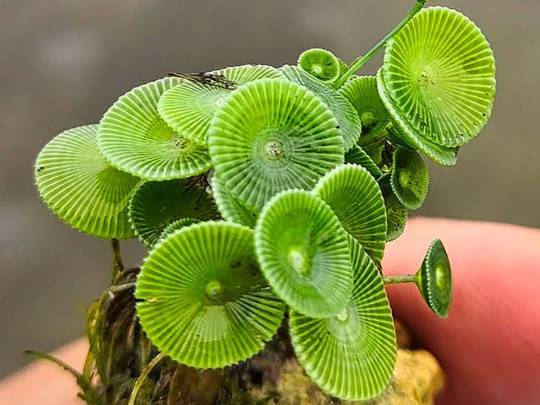
Halimeda is an type of algae that is native in some parts of the Great Barrier Reef. This species of algae has evolved by becoming more tolerant of growing on dead plants and sand.
Carrageenan moss is a type of red algae that grows on the shores of Ireland, Scotland, and Britain. This species of algae evolved to persevere the cold weather of the British Islands by keeping it's roots within the rocky shores.
Animals in the Ocean:
Humpback whales are aquatic mammals that feed in the polar regions of the ocean and migrate to more tropical waters to reproduce. This species adapted to their environment by resting at the surface horizontally to prevent water going into their blowholes because they still need land air, even though they swim way more than they ever walk.

Pacific Oysters are saltwater mollusks that are native in the Pacific coasts of Asia. However, they can also be bred in North America, Australia, Europe, and New Zealand. This species evolved to stick tightly onto rocks with algae via their suctions that they have on their inner bodies.

An average Pacific Oyster
The Blue Tang is an blue and black fish that is native in the reefs of the Philippines, Indonesia, Japan, the Great Barrier Reef of Australia, to name a few. This species evolved a poison and brighter colors to deter predators from consuming it or any of its offspring.
The Red Comb Star is a starfish native to the East Atlantic Ocean near the Mediterranean. This species has evolved little combs that stick onto the ocean floor and catch mollusks at the same time.
Threats to the biome:
Yep, you already know the threats. But I'm going to explain them anyways.
A ton of plastic is thrown in the ocean. One of the reasons why is because of littering. Plastic is a lot more lightweight, but that doesn't stop the wind, rain, or people from throwing them into rivers, drains that lead directly into the ocean, or anywhere that isn't the recycling bin. So imagine a pile of plastic in the ocean with turtles chocking on plastic bags and fish eating the microplastics. This is what you see on the surface.
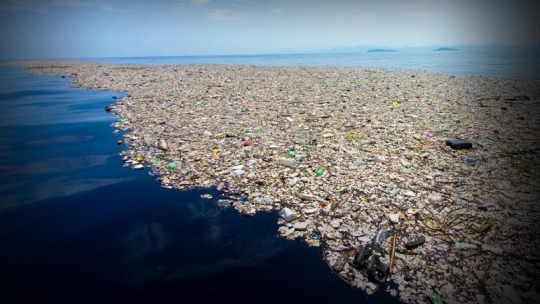
This is only the surface level. The cute turtles and their babies could eat some of this plastic stuff and die!
Oil from man-made oil platforms can spill out into the ocean, or the oil could spill from recreational boats run by people too careless about the environment. This is a threat because the oil could suffocate the many water-breathing ecosystem and the community of different species living there. Don't believe me? Look up the Deepwater Horizon spill of 2010 on Google.
Why You Should Visit:
As long as you are wearing non-faulty scuba gear, then you are gonna have a good time. Because there are a ton of coral reefs with a community of unique fish living in the coral crevices. You can hear the whales sing their majestic songs and the dolphins chirp and play. You can even look at the little seaweed plants float with the current.
Citations:
3 notes
·
View notes
Text
Must Visit Places in Adelaide, SA
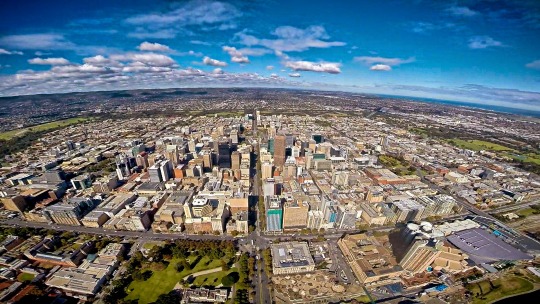
I. Introduction
Adelaide is a charming city located in the southern region of Australia. Known for its picturesque beaches, beautiful parks, and rich culture, Adelaide is a popular tourist destination for both locals and visitors alike. In this article, we will highlight some of the must-visit places in Adelaide that will make your visit unforgettable.
II. Historical Places
A. Adelaide Oval
Since 1871, Adelaide Oval has been a recognisable landmark on the city's skyline. The stadium has played host to numerous international sporting events and served as the home of cricket and Australian rules football in South Australia. Adelaide Oval not only hosts sporting events but also offers guided tours that give guests an inside look at the stadium's background and amenities.
B. Port Adelaide Historic District
Port Adelaide is a historic district located approximately 14 km north-west of Adelaide’s city center. The district has been beautifully preserved and offers visitors a glimpse into Adelaide’s maritime history. Visitors can explore the district’s many museums, galleries, and historic buildings, including the National Railway Museum and the South Australian Maritime Museum.
C. Adelaide Gaol
Adelaide Gaol is a former prison that was in operation from 1841 to 1988. The gaol has been beautifully restored and is now a museum that offers visitors a look at what life was like for prisoners in the 19th and early 20th centuries. Visitors can take a guided tour of the gaol and explore the cells, exercise yards, and execution chamber.
III. Nature and Parks
A. Adelaide Botanic Garden
The Adelaide Botanic Garden is a beautiful park located in the heart of the city. The garden features a range of themed gardens, including a medicinal plant garden, a rose garden, and a palm house. The garden also hosts a range of events and exhibitions throughout the year, making it a great destination for visitors of all ages.
B. Cleland Conservation Park
Cleland Conservation Park is a beautiful natural reserve located approximately 20 km south-east of Adelaide’s city center. The park is home to a range of wildlife, including kangaroos, koalas, and emus. Visitors can explore the park’s walking trails, which offer stunning views of the surrounding landscape.
C. Morialta Conservation Park
Morialta Conservation Park is a beautiful natural reserve located approximately 10 km north-east of Adelaide’s city center. The park is home to a range of walking trails, including the popular Three Falls Trail, which takes visitors past three stunning waterfalls. The park is also a popular destination for rock climbing and abseiling.
IV. Food and Drink
A. Central Market
The Central Market is a historic market located in the heart of Adelaide’s city center. The market features over 80 stalls, selling everything from fresh produce to gourmet cheeses and artisanal bread. The market also has a range of cafes and restaurants, making it a great destination for foodies.
B. Adelaide Hills Wineries
There are some of Australia's top wineries in the Adelaide Hills. Visitors can take a wine tour of the area and stop by several cellar doors, such as Shaw and Smith Winery and Hahndorf Hill Winery. The area is also home to a variety of eateries and cafes, giving visitors the chance to eat and drink while admiring the breathtaking views.
C. Peel Street
Peel Street is a popular dining precinct located in Adelaide’s city center. The precinct is home to a range of restaurants and bars, offering everything from modern Australian cuisine to Asian fusion dishes. Peel Street is a great destination for foodies looking to explore Adelaide’s vibrant dining scene.
V. Art and Culture
A. Art Gallery of South Australia
The Art Gallery of South Australia is a must-visit destination for art lovers. The gallery features a range of artworks, including paintings, sculptures, and photographs, from Australian and international artists. The gallery also hosts a range of exhibitions and events throughout the year, making it a great destination for visitors of all ages.
B. South Australian Museum
The South Australian Museum is a must-visit destination for anyone interested in natural history and cultural heritage. The museum’s collection features over 4 million objects, including fossils, minerals, and artifacts from Aboriginal and Pacific Islander cultures. The museum also hosts a range of exhibitions and events throughout the year, making it a great destination for visitors of all ages.
C. Adelaide Festival Centre
In the centre of the city is a centre for culture called the Adelaide Festival Centre. The centre has a variety of performance venues, such as theatres and concert halls, and it hosts a variety of events and performances all year long in the performing arts, such as music, dance, and theatre. The centre is a great place to spend a night out because it also has a variety of bars and restaurants.
VI. Family-Friendly Places
A. Adelaide Zoo
The Adelaide Zoo is a must-visit destination for families. The zoo is home to over 2,500 animals from over 250 species, including pandas, lions, and giraffes. The zoo also offers a range of experiences, including animal encounters and behind-the-scenes tours, making it a great destination for visitors of all ages.
B. Glenelg Beach
The beach at Glenelg is a favourite spot for tourists and families. The beach is a great place to spend the day because it has a variety of amenities like cafes, restaurants, and playgrounds. The historic Glenelg Tram, which runs from the city's centre to the beach, is another option for tourists.
C. Adelaide Himeji Garden
The Adelaide Himeji Garden is a Japanese-style garden located in the southern part of Adelaide’s city center. The garden features a range of traditional Japanese elements, including a koi pond, a teahouse, and a bamboo forest. The garden is a great destination for families looking to escape the hustle and bustle of the city.
VII. Conclusion
Adelaide is a stunning city with something to offer everyone, including historical structures, stunning natural attractions, delicious food and drink, and a thriving arts and culture scene. Adelaide is unquestionably worthwhile a visit, regardless of whether you're travelling alone, with friends, family, or as a couple. We hope this article has given you the desire to explore the city and find all of its wonderful hidden gems.
Reaching for AC Repair, Adelaide, SA? White Air Services has been keeping South Australian’s comfortable at home and work for over 25 years. Their Air Conditioning Technicians are fully trained and experienced with all air conditioning brands, split systems, evaporative, and reverse cycle systems. Whether your Air Conditioner is due for a service to keep it running efficiently or you need an urgent repair, White Air Services can help you.
Business Details:
White Air Services 0439446722 76 Torres Ave, Flinders Park SA 5025, Australia https://whiteairservices.com.au/
Social Media:
Facebook
1 note
·
View note
Text
Discover the Best of Hunter Valley Wine and Dine Tours
Indulge in a Wine & Culinary Escape When it comes to world-class wines and gourmet dining, Hunter Valley Wine and Dine Tours offer an unmatched experience. Located in the heart of New South Wales, this breathtaking wine region is a must-visit for food and wine lovers. Whether you're craving exquisite wine tastings or unforgettable dining experiences, Guided Wine Tours Hunter Valley provide the perfect way to explore the region’s finest flavors and scenic beauty.
Unveil the Magic of Hunter Valley’s Vineyards Hunter Valley is home to some of Australia’s most esteemed wineries, producing outstanding wines for generations. From full-bodied Shiraz to crisp Semillon and elegant Chardonnay, every sip tells a story of craftsmanship. With Guided Wine Tours Hunter Valley, you’ll have the opportunity to visit award-winning wineries, enjoy exclusive tastings, and gain insights from expert winemakers.

With Hunter Valley Wine and Dine Tours, each stop is carefully selected to offer a variety of wines, ensuring a well-rounded and memorable tasting experience.
A Culinary Delight to Complement Your Wine Journey Hunter Valley isn’t just about wine—it’s also a paradise for food lovers. The region is known for its farm-to-table dining, where fresh, locally sourced ingredients create mouthwatering dishes. As part of your Hunter Valley Wine and Dine Tour, you’ll indulge in expertly curated meals at top-rated restaurants, with dishes designed to perfectly complement the wines of the region.
From tender steaks paired with bold reds to fresh seafood enhanced by crisp whites, every meal is a celebration of flavors.
Travel in Comfort & Style Relax and enjoy your wine and dine experience without worrying about transportation. With Transportransport Hunter Valley Wine and Dine Tours, you’ll travel in comfort, taking in the picturesque vineyards while our professional drivers handle the rest. Sit back, unwind, and immerse yourself in the beauty of the region.

Perfect for Every Occasion Whether you’re planning a romantic escape, a group outing, or a special celebration, Guided Wine Tours Hunter Valley cater to all occasions. With customizable tour options, you can create a personalized experience that aligns with your preferences, ensuring an unforgettable journey through one of Australia’s most beloved wine regions.
Book Your Hunter Valley Wine & Dine Experience Today! Ready to embark on the ultimate wine and dine adventure? Join Hunter Valley Wine and Dine Tours for a guided experience through the region’s top wineries and dining destinations.
Visit www.transportransport.com/wine-tours to book your tour today.
For inquiries, contact us at [email protected] or call 411133277. Cheers to an unforgettable journey through fine wines and gourmet delights!
#centralcoasttosydneyairporttransfers#privatetransferscentralcoasttosydney#shuttleservicescentralcoasttosydney#huntervalleywinetoursfromcentralcoast#privatehuntervalleywinetours#guidedwinetourshuntervalley#huntervalleywineanddinetours#cruiseshiptransferscentralcoasttosydney#centralcoasttosydneycruiseterminaltransfers#doortodoortransferscentralcoasttosydney
0 notes